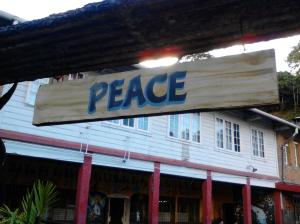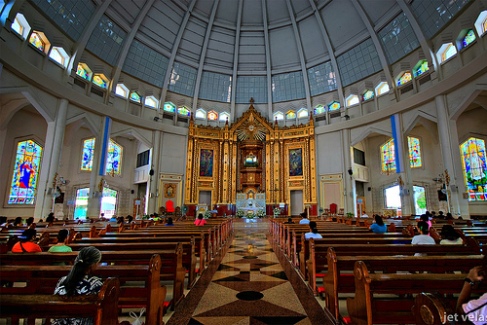This is the first part of the synthesis paper I am writing.
When I was in Grade I, I had a bestfriend named Frederick. He was my “partner-in-crime” in doing all the pranks to our unsuspecting classmates. He was my playmate and seatmate. He was always present in school that is why we were surprised when, one day, he was absent in class. Later that day, we found out that Frederick is dead. He died the previous night during an encounter between the New People’s Army and the army troops of the Philippine Government. He died of multiple gunshots when their house was caught in a crossfire between the two armed parties. He was 7 years old.
Growing up in Isabela, hearing cases like Frederick’s story is a normal phenomenon. Hidden in our forests and mountains are the ideological schools and training grounds of the communist movement. In fact, we also experienced having someone knock on our door, late in the evening, to ask for revolutionary taxes. They also did massive recruitments among the youth. I even remembered one of our classmates proudly showing us a picture of his elder brother, taken from an undisclosed area, toting a high-caliber rifle. On the other hand, military camps and check points are strategically located in every town of our province. They also did regular campaigns in each barangay to show us who the “enemies” are. Guns are like toys to these two groups which they play when they encounter each other. Our fields are their playground.
With these as my background, I wished then, that my friends and I could play safely even at night, that we could sleep soundly without hearing gunshots nearby, and that we would wake up the following day to carry on our daily activities. My childhood experiences made me dream of peace. This desire for peace motivated me to work for peace especially when I joined a non-government organization that focuses on peace advocacy, dialogue, and non-violence.
My work as a peace advocate brought me in various places where I encountered the horrors of war and conflict. At the height of an all-out war against an armed group in Mindanao in 2008, I had the chance to visit an evacuation center in Datu Piang for a peace mission, seeing the civilians’ suffering made me more aware that war displaces people and creates wider animosity between neighbors because war builds suspicion against those who belong to other groups, religions, and cultural affiliations. In 2005, when I was given the opportunity to stay in Pikit, Cotabato, I saw how people carry with them the emotional wounds and psychological trauma brought about by their collective experience of conflict. On the other hand, in early 2008, my encounter with the victims of Khmer Rouge in Cambodia and one of the seven survivors of the notorious Tuol Sleng prison showed me that war can destroy not only a person’s identity but it can also destroy a community’s shared humanity. Indeed, just like what Fr. Bert Layson, OMI, former parish priest of Pikit, said: “in war, the enemy is war itself.”
War can also bring out both the worst and the best in human persons. As I witnessed the worst, I cannot discount that I have also seen the best in people. I saw how many of our unsung heroes in the ground do their share in bridging the gap between conflicting parties. In another interesting case, in a situation of war where men seem to dominate, I met a group of women who very creatively contributed to peacebuilding by depriving their gun-bearing husband of sex until they stop doing their violent ways and start getting involved in the local peace process. I was also inspired by the dedication of countless church workers, religious, and clergy, oftentimes risking their lives, to bear witness to the Gospel and God’s Kingdom. Their selflessness, courage, and fidelity to the message of peace they proclaim made me believe that there is something more to life than doing what I was paid to do as a social worker.
With these various cases of conflict, of human triumphs and defeat, and definitely more, as my background, I found my vocation.
My experience of theological studies challenged me to look back at my experiences then as a peace advocate. During the first few years of my involvement in peace advocacy, I would often ask: where is the church in all these things? Sitting through my class in social teachings of the church, especially through various Papal Encyclicals, I am now convinced that the church has been with us all throughout the suffering of God’s people. True to its calling as the spouse of the Incarnate Word, the Catholic Church, in history, acts prophetically to denounce injustices, violence, oppression, and anything that violates the dignity of human person. “It is unlikely, however, that many would make such a quick association between Catholicism and the notion of social justice. For this reason, Catholic social teaching has often been called our ‘best kept secret.’”[1] Massaro added that “the sharing of this secret has already started in ways that may not be obvious. In fact, many of the laudable social institutions and practices that we take for granted today have their roots in teachings and activities of the Christian community, including the Catholic Church.”[2] In this spirit, I would like to know more the “best kept secret” of the church.
While doing my work as a peace advocate from 2005-2008, I was conscious then that I am a social worker, guided by secular frameworks of peacebuilding; however, our class in the social teachings of the church confronted me with the fact that I could also be a Catholic social worker, a Christian peacebuilder, guided by the principles of the Gospel and the teachings of the Church. The secular framework I have learned taught me how to engage into dialogue, advocacy, and peaceful resolutions of conflict but my Catholic faith urges me to do more. Aside from working towards the absence of war and direct physical conflicts, the Good News of Jesus and the teachings of the Church compel me to work also towards the presence of social mechanisms that would support the growth of each human person in all aspects, promote justice and reconciliation, empower them to work for the same cause, and help them live as the image and likeness of God.
To know better the idea of becoming a “Catholic social worker, and a Christian peacebuilder,” I would like gear towards coming up with a “Theology of Peace” so I can start integrating what I have learned as a social worker into my faith as a Catholic and in my life as a religious. I hope, too, that doing so will help me to be more effective in my future ministries as an Assumptionist. In my attempt to come up with a Theology of Peace, I would like to use the principles stated in the encyclical “Pacem in Terris” by John XXIII vis-a-vis the teachings of the Church. Using “Pacem in Terris” as guide may have its own limitation since it was written in its own time with a different social milieu but I believe, many principles stated in this encyclical are timeless since these were anchored in the Gospel message.
[1] Thomas Massaro, SJ, Living Justice: Catholic Social Teaching in Action (Wisconsin: Sheed and Ward, 2000), 13.
[2] Ibid., 14.









